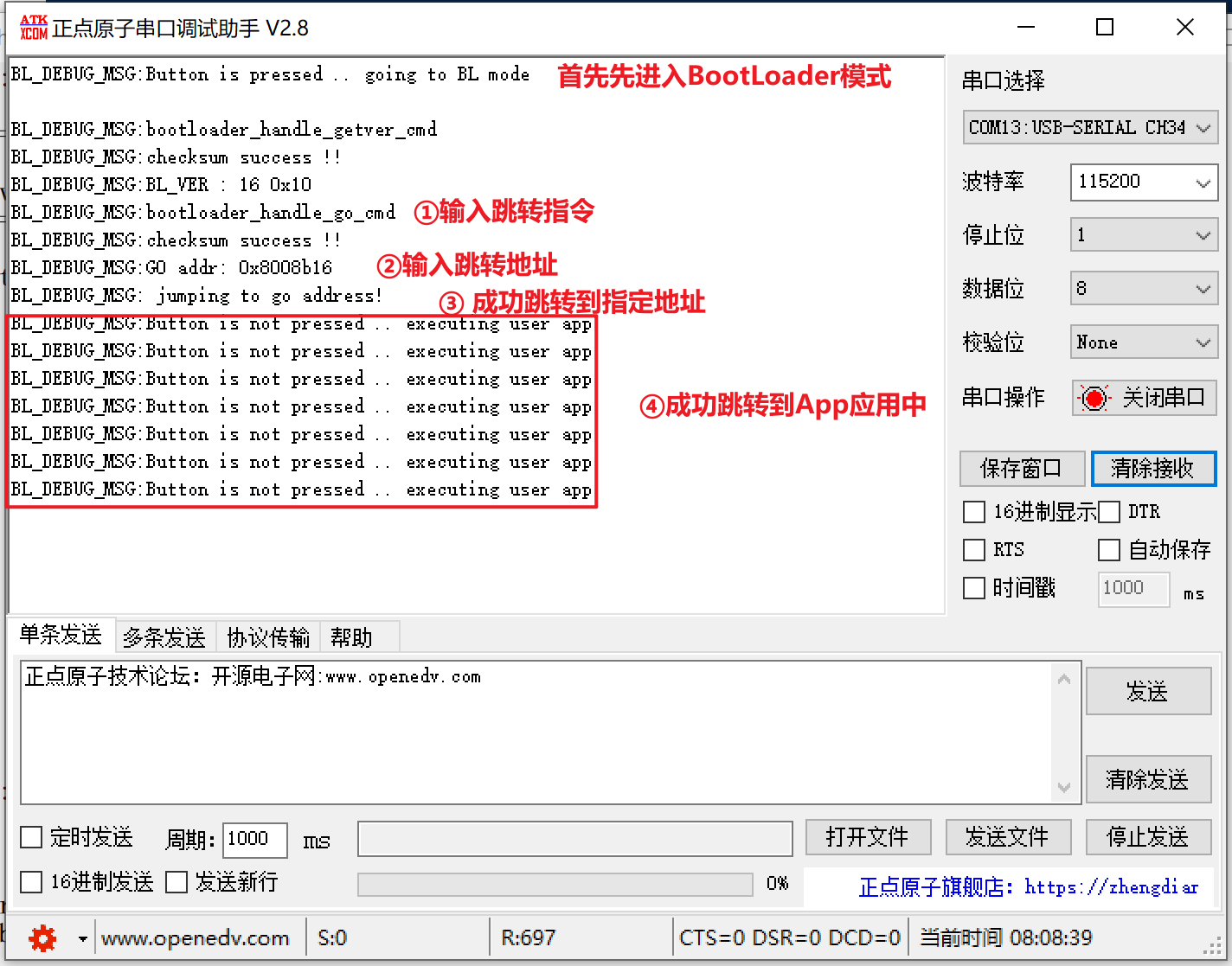
| C++语法 | 相关知识点 | 可以通过点击 | 以下链接进行学习 | 一起加油! |
|---|---|---|---|---|
| 命名空间 | 缺省参数与函数重载 | C++相关特性 | 类和对象-上篇 | 类和对象-中篇 |
| 类和对象-下篇 | 日期类 | C/C++内存管理 | 模板初阶 | String使用 |
| String模拟实现 | Vector使用及其模拟实现 | List使用及其模拟实现 | 容器适配器Stack与Queue | Priority Queue与仿函数 |
| 模板进阶-模板特化 | 面向对象三大特性-继承机制 | 面向对象三大特性-多态机制 | STL 树形结构容器 | 二叉搜索树 |
| AVL树 | 红黑树 | 红黑树封装map/set | 哈希-开篇 | 闭散列-模拟实现哈希 |
| 哈希桶-模拟实现哈希 |
本篇将讲述如何通过哈希表封装
unordered_map和unordered_set容器。在开始本章内容之前,建议先阅读红黑树封装map和set一文,以便更好地理解编译器如何区分unordered_map和unordered_set并调用底层哈希表。


🌈个人主页:是店小二呀
🌈C语言专栏:C语言
🌈C++专栏: C++
🌈初阶数据结构专栏: 初阶数据结构
🌈高阶数据结构专栏: 高阶数据结构
🌈Linux专栏: Linux
🌈喜欢的诗句:无人扶我青云志 我自踏雪至山巅 
文章目录
- 一、节点类型
- 二、区分unordered_map/set容器
- 三、相关文件修改后
- 3.1 HashTable.h
- 3.2 unoderded_set.h
- 3.3 unoderded_map.h
- 四、实现迭代器
- 4.1 迭代器常见功能
- 4.2 operator++实现
- 4.3 编译器扫描顺序问题
- 4.3.1 【第一个办法】:声明及其友元
- 4.3.2 【第二办法】:内部类
- 4.4 operator++内部逻辑
- 4.5 获得begin和end迭代器位置
- 4.6 迭代器调用流程图
- 五、unoderded_map/set相关接口实现
- 5.1 unoderded_map相关接口
- 5.2 unoderded_set相关接口
- 5.3 HashTable相关接口调整
- HashTable.h
这里哈希表将采用哈希桶的方式解决哈希冲突且实现哈希表结构,那么我们需要对哈希表节点类型进行处理,同时设计编译器去识别unordered_map/set的逻辑。
一、节点类型
如果我们想使用哈希表封装unordered_map/set容器,就需要考虑泛型编程,将节点类型统一成T类型
template<class T>
struct HashNode
{
T _data;
HashNode<T>* _next;
HashNode(const T& data)
:_data(data)
,_next(nullptr)
{}
};
二、区分unordered_map/set容器
编译器是无非确定你需要啥容器**,这里我们可以通过外部输入数据,使得编译器明确你需要啥容器,该容器都有一套属于返回K类型的仿函数**,只要unordered_set是否会多余,这里可以参考红黑树封装map/set文章,这里是为了跟map构成模板,陪太子读书。

既然我们希望可以通过手动输入数据,得到预计效果,那么关于HashFunc函数也是期望从外部调用,这里可以写到外面来。(图片写错了,这里看下面的)
template<class K,class Hash = HashFunc > and template<class K,class T,class Hash = HashFunc>
三、相关文件修改后
3.1 HashTable.h
#pragma once
#include <iostream>
using namespace std;
#include <string>
#include <vector>
template<class K>
struct HashFunc
{
size_t operator()(const K& key)
{
return (size_t)key;
}
};
template<>
struct HashFunc<string>
{
size_t operator()(const string& key)
{
size_t hash = 0;
for (auto ch : key)
{
hash *= 131;
hash += ch;
}
return hash;
}
};
namespace hash_bucket
{
template<class T>
struct HashNode
{
T _data;
HashNode<T>* _next;
HashNode(const T& data)
:_data(data)
,_next(nullptr)
{}
};
template<class K, class T, class KeyOfT, class Hash>
class HashTable
{
public:
typedef HashNode<T> Node;
HashTable()
{
_tables.resize(10, nullptr);
}
~HashTable()
{
for (size_t i = 0; i < _tables.size(); i++)
{
Node* cur = _tables[i];
while (cur)
{
Node* next = cur->_next;
delete cur;
cur = next;
}
}
}
bool Insert(const T& data)
{
Hash hs;
KeyOfT kot;
if (Find(kot(data))
{
return false;
}
if (_n == _tables.size())
{
vector<Node*> NewTable(n * 10, nullptr);
for (size_t i = 0; i < _tables.size(); i++)
{
Node* cur = _tables[i];
while (cur)
{
Node* next = cur->_next;
// 头插新表的位置
size_t hashi = hs(kot(cur->_data)) % NewTable.size();
cur->_next = NewTable[hashi];
NewTable[hashi] = cur;
cur = cur->_next;
}
_tables[i] = nullptr;
}
_tables.swap(NewTable);
}
size_t hashi = hs(kot(data)) % _tables.size();
//进行头插操作
Node* newnode = new Node(data);
_tables[hashi]->_next = newnode;
_tables[hashi] = newnode;
++_n;
return true;
}
Node* Find(const K& key)
{
Hash hs;
KeyOfT kot;
size_t hashi = hs(key) % _tables.size();
Node* cur = _tables[hashi];
while (cur)
{
if (kot(cur->_data) == key)
{
return &kot(cur->_data);
}
else
{
cur = cur->_next;
}
}
return nullptr;
}
bool Erase(const K& key)
{
Hash hs;
size_t hashi = hs(key) % _tables.size();
Node* cur = _tables[hashi];
Node* prev = nullptr;
while (cur)
{
if (kot(cur->_data) == key)
{
if (prev == nullptr)
{
_tables[hashi] = cur->_next;
}
else
{
prev->_next = cur->_next;
}
delete cur;
return true;
}
else
{
prev = cur;
cur = cur->_next;
}
}
return false;
}
private:
vector<Node*> _tables;
size_t _n = 0;
};
}
这里关于HashFunc()需要放在哈希命名空间外部,因为在其他头文件需要使用到该HashFunc()
3.2 unoderded_set.h
namespace unoderded_set
{
template<class K,class Hash = HashFunc<K>>
class unoderded_set
{
struct SetKeyOfT
{
const K& operator()(const K& key)
{
return key;
}
};
private:
hash_bucket::HashTable<K, const K, SetKeyOfT, Hash> _ht;
};
}
3.3 unoderded_map.h
namespace unoderded_map
{
template<class K,class V,class Hash = HashFunc<K>>
class unoderded_map
{
struct SetKeyOfT
{
const K& operator()(const pair<K,V>& key)
{
return key.first;
}
};
public:
private:
hash_bucket::HashTable<K, const pair<K,V>, MapKeyOfT, Hash> _ht;
};
}
四、实现迭代器
实现哈希表中迭代器跟之前其他容器实现迭代器需要考虑的差不多,主要是对于operator++和operator–需要考虑不同容器的结构进行行为重定义。同时需要设计为模板
template<class T,class Ptr, class Ref>去匹配const类型和非const类型调用同一个迭代器。
typedef __HTIterator<T*, T&> iterator;
typedef __HTIterator<const T*, const T&> const_iterator;
这里得到当前_node的位置,是浅拷贝。这不希望改变实参,而是希望通过该实参位置进行操作,得到预期数据,在下一次进行操作时还是之前位置。
4.1 迭代器常见功能
template<class T,class Ptr, class Ref>
struct _HTIterator
{
//得到一个节点
typedef HashNode<T> Node;
typedef _HTIterator Self;
Node* _node;
//这里希望是浅拷贝
_HTIterator(const Node* node)
:_node(node)
{}
Ptr operator->()
{
return &_node->_data;
}
Ref operator*()
{
return _node->_data;
}
bool operator!=(const Self& s)
{
return _node != s._node;
}
};
4.2 operator++实现
【大体思路】:在第一个不为空位置,向下遍历++直到_node-> _next ==nullptr说明该位置迭代器达到悬挂着哈希桶最后一个不为空的桶,那么需要通过当前节点数值,进行除留余数法得到当前表位置下标,以该下标为基准重新在表中找到下一个不为空的位置,直到i == tables.size()说明遍历完成。
4.3 编译器扫描顺序问题
目前关于迭代器实现某方面功能需要借助HashTable类的类型及其成员,但是问题在于HashTable需要将迭代器设为"武器",将迭代器类功能具体实现放在HashTabl类上方,编译器扫描是上到下扫描,这就导致了这两个类总有一方无法得到另外一份的东西。
4.3.1 【第一个办法】:声明及其友元
我们可以在迭代器类中声明HashTable类作为类型定义一个哈希表指针,同时在HashTable类型设置迭代器友元,使之迭代器可以通过定义的哈希表指针访问到哈希表。
template<class K,class T,class Ptr, class Ref,class KeyOfT, class Hash>
struct _HTIterator
{ //前置声明
template<class K, class T, class KeyOfT, class Hash>
class HashTable;
}
template<class K, class T, class KeyOfT, class Hash>
class HashTable
{
public:
template<class K, class T, class Ptr, class Ref, class KeyOfT, class Hash>
friend struct _HTIterator;
}
【前置声明】
前置声明仅仅告诉编译器有一个 HashTable 类,但由于没有给出该类的完整定义和实现,编译器并不知道如何去使用它。也就是说,你不能在代码中使用 HashTable 类的功能,比如创建对象、调用其成员函数、访问数据成员等,除非你提供了类的完整定义。
4.3.2 【第二办法】:内部类
template<class K, class T, class KeyOfT, class Hash>
class HashTable
{
typedef HashNode<T> Node;
public:
// 友元声明
/*template<class K, class T, class KeyOfT, class Hash>
friend struct __HTIterator;*/
// 内部类
template<class Ptr, class Ref>
struct __HTIterator
{
typedef HashNode<T> Node;
typedef __HTIterator Self;
}
}
这里就采用第一种方法(选择哪个方法都是差不多的)
4.4 operator++内部逻辑
Self& operator++()
{
KeyOfT kot;
Hash hs;
if( _node->_next )
{
_node = _node->_next;
}
else
{
//访问该成员
size_t i = hs(kot(_node->_data)) % _pht->_tables.size();
i++;
for (; i < _pht->_tables.size(); i++)
{
if (_pht->_tables[i])
{
break;
}
}
if (i == _pht->tables.size())
{
_node = nullptr;
}
else
{
_node = _pht->_tables[i];
}
}
}
由于在库中unoderded_map和unoderded_set只有单向迭代器,就没有operator–。如果有兴趣可以将单链表设计为双向链表,然后根据operator++逻辑,设计出一个operator–接口
4.5 获得begin和end迭代器位置

iterator begin()
{
for (size_t i = 0; i < _tables.size(); i++)
{
Node* cur = _tables[i];
if (cur)
{
return iterator(cur, this);
}
}
}
iterator end()
{
return iterator(nullptr, this);
}
const_iterator begin() const
{
for (size_t i = 0; i < _tables.size(); i++)
{
Node* cur = _tables[i];
if (cur)
{
return iterator(cur, this);
}
}
}
const_iterator end() const
{
return iterator(nullptr, this);
}
这里就是通过哈希表begin和end接口,构造相关需求的迭代器。这里很好体现了每个不同对象的迭代器指向表是自己对象的哈希表。
4.6 迭代器调用流程图

unoderded_map及其unoderded_set迭代器配置,由于unoderded_map支持修改元素,那么没有必要写const系列。

五、unoderded_map/set相关接口实现
5.1 unoderded_map相关接口
namespace unoderded_map
{
template<class K, class V, class Hash = HashFunc<K>>
class unoderded_map
{
struct MapKeyOfT
{
const K& operator()(const pair<K, V>& key)
{
return key.first;
}
};
typedef typename hash_bucket::HashTable<K, const pair<K, V>, MapKeyOfT, Hash>::iterator iterator;
iterator begin()
{
return _ht.begin();
}
iterator end()
{
return _ht.end();
}
V& operator[](const K& key)
{
pair<iterator, bool> ret = insert(make_pair(key, V()));
return ret.first->second;
}
pair<iterator, bool> insert(const pair<K, V>& kv)
{
return _ht.Insert(kv);
}
private:
hash_bucket::HashTable<K, const pair<K, V>, MapKeyOfT, Hash> _ht;
};
}
【unoderded_map增添接口】:V& operator[](const K& key)和pair<iterator, bool> insert(const pair<K, V>& kv)
5.2 unoderded_set相关接口
#pragma once
#include "HashTable.h"
namespace unoderded_set
{
template<class K, class Hash = HashFunc<K>>
class unoderded_set
{
struct SetKeyOfT
{
const K& operator()(const K& key)
{
return key;
}
};
typedef typename hash_bucket::HashTable<K, const K, SetKeyOfT,Hash>::iterator iterator;
typedef typename hash_bucket::HashTable<K, const K, SetKeyOfT, Hash>::const_iterator const_iterator;
iterator begin()
{
return _ht.begin();
}
iterator end()
{
return _ht.end();
}
const_iterator begin() const
{
return _ht.begin();
}
const_iterator end() const
{
return _ht.end();
}
pair<iterator, bool> insert(const K& key)
{
return _ht.Insert(key);
}
iterator find(const K& key)
{
return _ht.Find(key);
}
bool erase(const K& key)
{
return _ht.Erase(key);
}
private:
hash_bucket::HashTable<K, const K, SetKeyOfT, Hash> _ht;
};
}
【unoderded_set增添接口】 pair<iterator, bool> insert(const K& key)和 iterator find(const K& key)及其bool erase(const K& key)
5.3 HashTable相关接口调整
iterator Find(const K& key)
{
Hash hs;
KeyOfT kot;
size_t hashi = hs(key) % _tables.size();
Node* cur = _tables[hashi];
while (cur)
{
if (kot(cur->_data) == key)
{
return iterator(cur, this);
}
else
{
cur = cur->_next;
}
}
return end();
}
pair<iterator, bool> Insert(const T& data)
{
Hash hs;
KeyOfT kot;
iterator it = Find(kot(data));
if (it != end())
return make_pair(it, false);
if (_n == _tables.size())
{
vector<Node*> NewTable(_n * 10, nullptr);
for (size_t i = 0; i < _tables.size(); i++)
{
Node* cur = _tables[i];
while (cur)
{
Node* next = cur->_next;
// 头插新表的位置
size_t hashi = hs(kot(cur->_data)) % NewTable.size();
cur->_next = NewTable[hashi];
NewTable[hashi] = cur;
cur = cur->_next;
}
_tables[i] = nullptr;
}
_tables.swap(NewTable);
}
size_t hashi = hs(kot(data)) % _tables.size();
//进行头插操作
Node* newnode = new Node(data);
_tables[hashi]->_next = newnode;
_tables[hashi] = newnode;
++_n;
return make_pair(iterator(newnode, this), true);
}
unodered_map当中operator[]可以看作insert和find融合版本,不需要单独设计Find(),但是内部还是有调用Find()逻辑
HashTable.h
#pragma once
#include <iostream>
using namespace std;
#include <string>
#include <vector>
template<class K>
struct HashFunc
{
size_t operator()(const K& key)
{
return (size_t)key;
}
};
template<>
struct HashFunc<string>
{
size_t operator()(const string& key)
{
size_t hash = 0;
for (auto ch : key)
{
hash *= 131;
hash += ch;
}
return hash;
}
};
namespace hash_bucket
{
template<class T>
struct HashNode
{
T _data;
HashNode<T>* _next;
HashNode(const T& data)
:_data(data)
, _next(nullptr)
{}
};
template<class K,class T,class Ptr, class Ref,class KeyOfT, class Hash>
struct _HTIterator
{
//前置声明
template<class K, class T, class KeyOfT, class Hash>
class HashTable;
//得到一个节点
typedef HashNode<T> Node;
typedef _HTIterator Self;
Node* _node;
const HashTable* _pht;
//这里希望是浅拷贝
//这里对象-->指向一个哈希表-->cur及其this。
_HTIterator(const Node* node,const HashTable* pht)
:_node(node)
,_pht(pht)
{}
Ptr operator->()
{
return &_node->_data;
}
Ref operator*()
{
return _node->_data;
}
bool operator!=(const Self& s)
{
return _node != s._node;
}
Self& operator++()
{
KeyOfT kot;
Hash hs;
if( _node->_next )
{
_node = _node->_next;
}
else
{
//访问该成员
size_t i = hs(kot(_node->_data)) % _pht->_tables.size();
i++;
for (; i < _pht->_tables.size(); i++)
{
if (_pht->_tables[i])
{
break;
}
}
if (i == _pht->tables.size())
{
_node = nullptr;
}
else
{
_node = _pht->_tables[i];
}
}
}
};
template<class K, class T, class KeyOfT, class Hash>
class HashTable
{
public:
template<class K, class T, class Ptr, class Ref, class KeyOfT, class Hash>
friend struct _HTIterator;
typedef _HTIterator< K, T, T*, T&, KeyOfT, Hash> iterator;
typedef _HTIterator<K, T,const T*, const T&, KeyOfT, Hash> const_iterator;
typedef HashNode<T> Node;
HashTable()
{
_tables.resize(10, nullptr);
}
~HashTable()
{
for (size_t i = 0; i < _tables.size(); i++)
{
Node* cur = _tables[i];
while (cur)
{
Node* next = cur->_next;
delete cur;
cur = next;
}
}
}
iterator Find(const K& key)
{
Hash hs;
KeyOfT kot;
size_t hashi = hs(key) % _tables.size();
Node* cur = _tables[hashi];
while (cur)
{
if (kot(cur->_data) == key)
{
return iterator(cur, this);
}
else
{
cur = cur->_next;
}
}
return end();
}
pair<iterator, bool> Insert(const T& data)
{
Hash hs;
KeyOfT kot;
iterator it = Find(kot(data));
if (it != end())
return make_pair(it, false);
if (_n == _tables.size())
{
vector<Node*> NewTable(_n * 10, nullptr);
for (size_t i = 0; i < _tables.size(); i++)
{
Node* cur = _tables[i];
while (cur)
{
Node* next = cur->_next;
// 头插新表的位置
size_t hashi = hs(kot(cur->_data)) % NewTable.size();
cur->_next = NewTable[hashi];
NewTable[hashi] = cur;
cur = cur->_next;
}
_tables[i] = nullptr;
}
_tables.swap(NewTable);
}
size_t hashi = hs(kot(data)) % _tables.size();
//进行头插操作
Node* newnode = new Node(data);
_tables[hashi]->_next = newnode;
_tables[hashi] = newnode;
++_n;
return make_pair(iterator(newnode, this), true);
}
iterator begin()
{
for (size_t i = 0; i < _tables.size(); i++)
{
Node* cur = _tables[i];
if (cur)
{
return iterator(cur, this);
}
}
}
iterator end()
{
return iterator(nullptr, this);
}
const_iterator begin() const
{
for (size_t i = 0; i < _tables.size(); i++)
{
Node* cur = _tables[i];
if (cur)
{
return iterator(cur, this);
}
}
}
const_iterator end() const
{
return iterator(nullptr, this);
}
bool Erase(const K& key)
{
Hash hs;
size_t hashi = hs(key) % _tables.size();
Node* cur = _tables[hashi];
Node* prev = nullptr;
while (cur)
{
if (kot(cur->_data) == key)
{
if (prev == nullptr)
{
_tables[hashi] = cur->_next;
}
else
{
prev->_next = cur->_next;
}
delete cur;
return true;
}
else
{
prev = cur;
cur = cur->_next;
}
}
return false;
}
private:
vector<Node*> _tables;
size_t _n = 0;
};
};

以上就是本篇文章的所有内容,在此感谢大家的观看!这里是店小二呀C++笔记,希望对你在学习C++语言旅途中有所帮助!



















